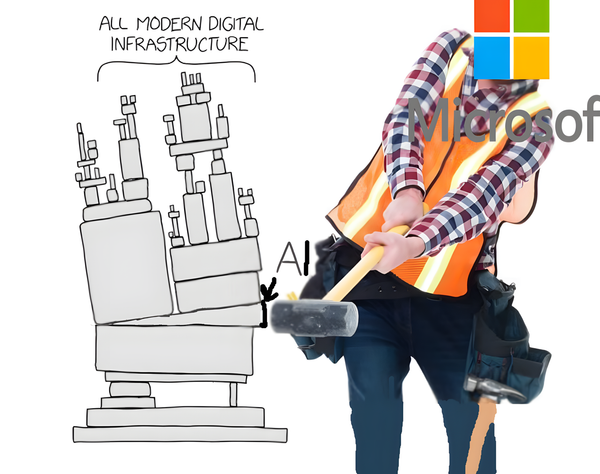The Managers' Guide #95

Treat every moment as your last. It is not preparation for something else. - Shunryu Suzuki
Salary expectations questions - How should you answer them?
How to approach the dreaded salary expectation question as a candidate.
- ❓ Understand the employer's motive: Companies ask about salary expectations primarily to ensure alignment with their budget and gauge your understanding of your market value — not necessarily to underpay you.
- ⏳ Delay the conversation: If possible, postpone discussing salary until later in the interview process or after receiving an offer — this gives you more leverage once they're invested in hiring you.
- 📚 Research relentlessly: Before the interview, use multiple sources (like Payscale, Glassdoor, Salary.com, BLS) to determine a realistic and data-backed salary range for the specific role, location, and your experience level — don't guess.
- 🎯 Provide a range, not a single number: When you must state expectations, offer a well-researched salary range (e.g., "$70,000 to $80,000") rather than a fixed figure — this shows flexibility while anchoring the negotiation.
- 🔗 Connect salary to your value: Frame your desired salary range in terms of the skills, experience, and specific value you will bring to the company and the role — justify your worth.
- 💰 Consider total compensation: Remember that base salary is only one piece of the puzzle — evaluate the entire package, including health benefits, bonuses, retirement plans, paid time off, and other perks.
- 🗣️ Prepare deferral phrases: Practice polite ways to sidestep the question early on, such as, “I’d prefer to learn more about the role and the team before discussing compensation” or asking about their budgeted range.
- 🚫 Avoid underselling yourself: Stating too low a number out of fear can signal a lack of confidence and make future negotiations difficult — stick to your researched market value.
- 📈 Be ready to justify your range: Have data and examples ready to support why your skills and experience warrant the salary range you've provided — link your qualifications directly to the job requirements.
- 🤔 Ask about their budget (carefully): Once you've established mutual interest, you can inquire about the budgeted range for the role, phrasing it collaboratively, like, “What salary range has the company budgeted for this position?”
The Art Of Workplace Finesse (Part II)
Continuing what we've started in the previous issue.
- 🧭 Finesse Defined: Workplace finesse is about navigating social dynamics effectively to achieve goals smoothly — it’s skillful execution, not manipulation.
- 👀 Read the Room: Develop situational awareness to understand unspoken cues, power dynamics, and the appropriate timing for actions or conversations.
- 🗣️ Communicate Strategically: Tailor your message, tone, and medium based on the audience and context — know when to be direct vs. indirect, public vs. private.
- ✨ Make Others Look Good: Proactively finding opportunities to highlight colleagues' contributions or support your manager builds goodwill and social capital.
- 🔮 Anticipate Needs: Demonstrate foresight by identifying potential issues or needs before they arise and subtly addressing them.
- ⏳ Master Timing: Understand that when you say or do something is often as important as what you say or do — patience can be a strategic tool.
- ⚖️ Choose Battles Wisely: Conserve your energy and political capital for issues that truly matter, rather than engaging in every minor conflict.
- 🖼️ Frame Thoughtfully: Present ideas, feedback, or requests in a way that considers the recipient's perspective and increases the likelihood of acceptance.
- 🤝 Handle Disagreements Gracefully: Address conflicts constructively, often privately, focusing on the issue and seeking collaborative solutions rather than assigning blame.
- 🤫 Practice Selective Transparency: Share information deliberately — understand that full transparency isn't always necessary or strategic in a complex workplace.
On Good Software Engineers
Caveat: don't treat this as a checklist!
- 💡 Beyond Code: Technical proficiency is necessary but insufficient — good engineers understand the broader context, business goals, and user needs driving their work.
- 🎯 Focus on Impact: They prioritize delivering actual value and solving real user or business problems — not just writing code or adhering to technical dogma.
- 🚀 Take Ownership: Good engineers demonstrate end-to-end responsibility for their work, from understanding requirements through deployment and ensuring operational success.
- ✍️ Communicate Effectively: Strong written and verbal communication skills are crucial for collaboration, documentation, influencing decisions, and articulating technical concepts clearly.
- 🛠️ Embrace Pragmatism: They make practical, context-aware decisions, choosing the right tools and approaches for the specific problem rather than being rigidly attached to certain technologies or methodologies.
- 🌱 Learn Continuously: A commitment to ongoing learning, adapting to new challenges, and improving their craft is a hallmark of effective engineers in the ever-evolving tech landscape.
- 🤝 Collaborate Well: They are effective team players who can work constructively with others, share knowledge, provide helpful feedback, and contribute positively to team dynamics.
- ✨ Simplify Complexity: Good engineers strive to manage and reduce unnecessary complexity in systems, making them easier to understand, maintain, debug, and evolve.
- 🛡️ Demonstrate Accountability: They take responsibility for the quality, reliability, and consequences of their code and technical decisions, owning mistakes and learning from them.
- ⏳ Think Long-Term: Consideration is given to the maintainability, scalability, operational aspects, and overall health of the software over its lifecycle — not just the immediate task.
On Job Promotions—Learn The Rules
- 📜 Understand the Game: Promotions aren't automatic rewards for loyalty or hard work — they are governed by specific, often unwritten, rules and processes within your company that you need to actively learn.
- 🪜 Know the Ladder: Familiarize yourself deeply with the defined expectations, competencies, and scope of impact required for the next level — not just excelling at your current one.
- 📈 Perform at the Next Level First: You must consistently demonstrate that you are already operating at the level you aspire to before the promotion cycle begins — proving your readiness through action.
- ✨ Focus on Demonstrable Impact: Promotions are primarily driven by visible, significant impact aligned with business goals — prioritize work that delivers clear value and showcases next-level capabilities.
- 🗣️ Get Your Manager's Sponsorship: Your manager is your most crucial advocate — explicitly discuss your promotion goals, align on expectations, solicit feedback, and ensure they actively support your case.
- 📣 Ensure Broad Visibility: Your accomplishments need to be known beyond your immediate team and manager, especially by those involved in calibration meetings — find ways to strategically showcase your work.
- 📝 Build Your Promotion Packet: Proactively document your achievements, impact, scope expansion, and how they align with the next level's criteria — make it easy for others to advocate for you.
- 🎯 Be Explicit About Your Goals: Clearly communicate your ambition for promotion to your manager — don't assume they know or that your work alone will speak for itself.
- ⏳ Recognize It Takes Time: Promotions often require sustained performance and evidence gathering over multiple cycles — start early, be patient, and stay persistent.
- ❓ Seek Targeted Feedback: Regularly ask for specific feedback related to the next level's expectations to identify gaps and demonstrate your commitment to growth.
Reducing Complexity
- 🤔 Distinguish Complexity Types: Recognize the difference between necessary essential complexity (inherent to the problem) and harmful accidental complexity (self-inflicted) — focus on reducing the latter.
- 🐌 Complexity Slows Value: Unnecessary complexity acts as drag, slowing down development cycles, increasing maintenance costs, and hindering the ability to deliver customer value quickly.
- 💪 Simplicity Requires Effort: Achieving simplicity isn't easy — it demands conscious effort, discipline, and often requires saying "no" to features or premature optimizations.
- 🎯 Focus on the Core Problem: Deeply understand the fundamental problem you're solving and relentlessly prioritize solutions that directly address it — avoid unnecessary additions and premature abstractions.
- 🤏 Work Incrementally: Tackle complexity by working in small, manageable batches, getting feedback often, and integrating continuously — this limits the accumulation of complex unknowns and allows for course correction.
- 🤝 Foster Shared Understanding: Reduce complexity arising from misalignment by investing in clear communication, shared mental models (like diagrams or maps), and collaborative problem-solving across teams and roles.
- 🔄 Make it Continuous: Reducing complexity isn't a phase or project — it's an ongoing practice of refactoring, simplifying, questioning assumptions, and paying down technical debt as part of regular development work.
- ❓ Question Everything: Actively challenge assumptions, requirements, and existing solutions — ask "why" frequently to ensure work genuinely adds value and doesn't introduce needless complexity.
- ✂️ Prune Aggressively: Be willing to remove features, code, or processes that are no longer valuable or add significant maintenance overhead relative to their benefit.
- 🏢 Consider Socio-Technical Factors: Recognize that team structures, communication pathways, cognitive load, and organizational incentives significantly influence system complexity — address these organizational aspects too.
Work Shape Mix
- 📊 Acknowledge Diverse Work Types: Recognize that product development involves a mix of activities — not just new features, but also bug fixes, tech debt reduction, discovery, experimentation, planning, and interrupts.
- ⚖️ Focus on the Work Mix: The proportion or ratio of these different work types significantly impacts team throughput, morale, and long-term health — understanding and managing this mix is crucial.
- 🧩 Analyze Work Shape: Consider not just the type of work, but its "shape" — how it arrives (e.g., planned vs. interrupt-driven), its size, predictability, and uncertainty.
- 👀 Visualize the Mix & Shape: Making the current work mix and shape visible (e.g., through metrics or mapping) is essential for enabling informed discussions about priorities, capacity, and strategy.
- 🛠️ Address Necessary "Non-Feature" Work: Explicitly allocate capacity for essential work like maintenance, paying down tech debt, tooling improvements, and discovery — neglecting these undermines future velocity.
- 🧭 Adapt Mix to Context: The "right" work mix isn't static — it should consciously evolve based on strategic goals, product maturity, market feedback, and team health.
- 🤔 Be Intentional About Allocation: Move from a reactive allocation of effort to a more deliberate approach — consciously deciding how much of which types of work to tackle based on desired outcomes.
- 💬 Facilitate Trade-off Discussions: Use the understanding of work mix and shape to have better conversations about trade-offs — e.g., investing in stability vs. building new features, handling interrupts vs. planned work.
That’s all for this week’s edition
I hope you liked it, and you’ve learned something — if you did, don’t forget to give a thumbs-up, add your thoughts as comments, and share this issue with your friends and network.
See you all next week 👋



